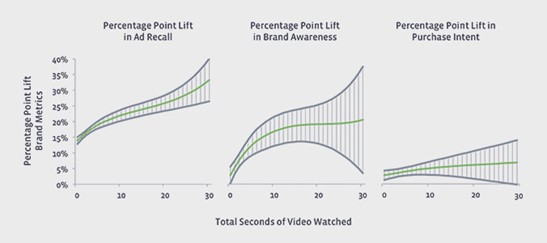The growing hate on YouTube pre-roll ads: do they really work?

Written by: LI Pui Ching, Venus
After Brian Cha, the famous motivational speaker, placed massive pre-roll ads for his business consulting services on YouTube in 2020[1] (Figure 1), he successfully attracted broad attention from the public. Many netizens considered his advertisements brainwashing and annoying (Figure 2). Thus, discussion on ways to block his YouTube pre-roll ads arose on online forum and social media. In this case, it seems that pre-roll ads are interruptive that they may undermine one’s branding. But still why are there so many pre-roll ads? Do they really work?

YouTube Pre-roll Ad
YouTube Pre-roll ads consist of skippable and non-skippable ones. They are automatically played before a video that a user has chosen to watch. For skippable pre-roll ads, it requires a minimum exposure, typically 5 seconds, before a “skip” button pops up. Pre-roll ad is only charged when someone views at least 30 seconds of the ad, view the entire ad (if shorter than 30 seconds) or made engagement like clicking a link (YouTube, 2020). Marketers are able to set criteria to target audience under categories like geography, language, demographics, topics and interest.
Value of YouTube Pre-roll Ad
From a Nielsen study commissioned by Facebook for Business (2015), it was found that from the moment a pre-roll ad was viewed, even before one second, an increase of ad recall, brand awareness, and purchase consideration were recorded (Figure 3). The biggest strength of YouTube pre-roll ad is that it is cost-effective, as the brand or product can earn free, valuable exposure when the target audience skip the ad before reaching 30-second viewership. While YouTube users complained that Brian Cha’s ads cause nuisance, he has successfully grabbed audience’s attention and made his brand got remembered.

How Pre-roll Ad Undermines Brand Image
Despite the fact that pre-roll ad leads to a lift of brand awareness, it does not promise to bring positive effect on brand image. Why did people consider Brian Cha’s ad annoying? Some netizens regarded his services as a scam and hold negative perception towards him for a long time. But the structure of pre-roll ads can indeed strengthen annoyance. In fact, pre-roll ads appear in the same location as the video content that consumers look for, literally blocking consumers from their online goals and lowering their sense of freedom (Edwards et al., 2013). Therefore, pre-roll ads are likely to arouse perceptions of irritation and intrusion (Campbell et al., 2017). With such negative impressions, consumers will be reluctant to engage and converse with the brand.
Optimizing Your Pre-roll Ad
No marketers would want their brand being perceived as something of a disturbance. To better optimize pre-roll ads, marketers should consider the following. First, the shorter the better: An ad should be precise as the maximum attention span of humans towards a video nowadays is only 8 seconds. However, if your ad has to be long, it is better to go for the skippable option as they are more user-friendly and can lower sense of intrusion. Last but not least, marketers should entertain audiences by producing creative ads that provoke complex affective responses, e.g. humor, nostalgia and shock, which involves more cognitive resources to understand the ad (Campbell et al., 2017). For example, Mercedes-Benz used fast-paced editing and engine sound to shock the audience and make them feel what means by reaching 60 MPH in 3.8 seconds[2]. To conclude, when planning for an ad campaign, marketers should fully understand what their target audiences would want to watch and optimize their pre-roll ads to reach campaign goals.
[1] Advertisement link: https://youtu.be/s16lR9X51f0
[2] Advertisement link: https://youtu.be/UNVUxChTPhw
Reference:
Campbell, Colin, Mattison Thompson, Frauke, Grimm, Pamela E, & Robson, Karen. (2017). Understanding Why Consumers Don’t Skip Pre-Roll Video Ads. Journal of Advertising, 46(3), 411-423.
Edwards, Steven M, Li, Hairong, & Lee, Joo-Hyun. (2013). Forced Exposure and Psychological Reactance: Antecedents and Consequences of the Perceived Intrusiveness of Pop-Up Ads. Journal of Advertising, 31(3), 83-95.
Facebook for Business. (2015). The Value of Video for Brands. Retrieved from: https://www.facebook.com/business/news/value-of-video
YouTube Advertising. (2020). YouTube Advertising Cost. Retrieved from: https://www.youtube.com/ads/pricing/
